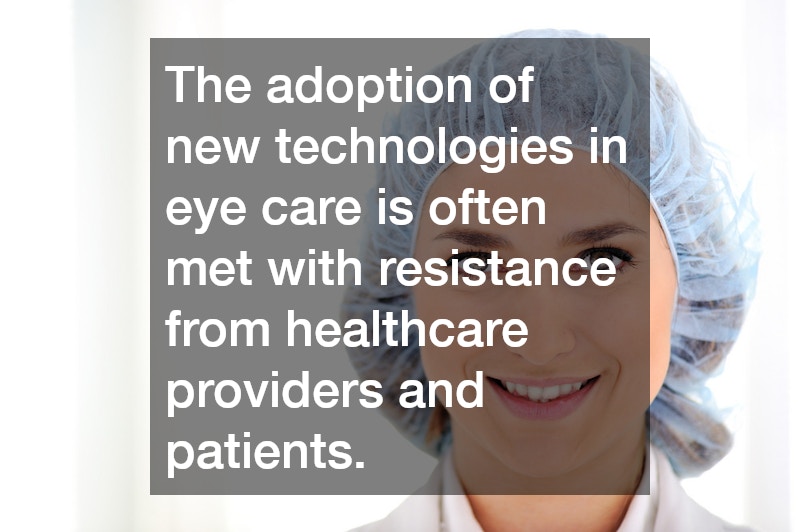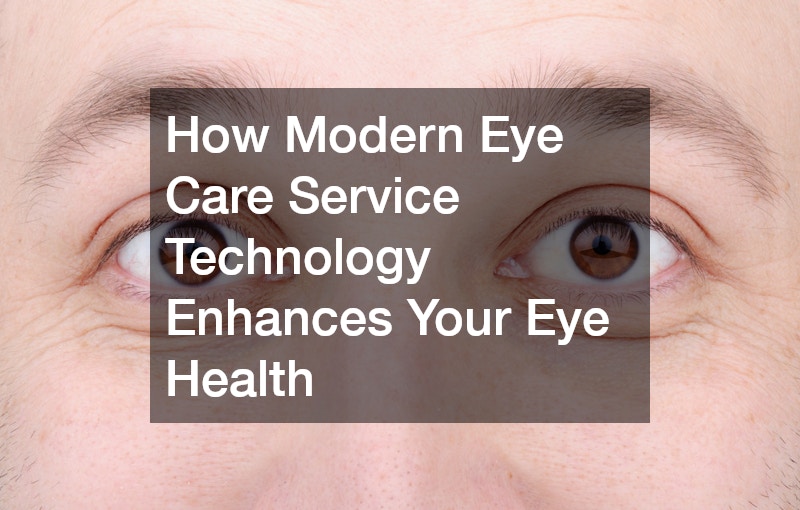The evolving landscape of eye care technology is shaping the future of eye health, offering significant improvement in diagnostic and eye care service. These advancements are poised to revolutionize the sector by providing early detection of eye conditions and catering to personalized treatment plans.
What Are the Latest Technologies in Eye Care?
Diagnostic Tools
Modern diagnostic technologies like Optical Coherence Tomography (OCT) have introduced a new era in detecting eye conditions with remarkable precision. OCT allows for enhanced visualization of the retina, enabling ophthalmologists to detect diseases such as glaucoma and macular degeneration at earlier stages.
These tools have improved the accuracy of diagnoses, reducing the risk of false negatives that could delay needed interventions. With high-resolution images, practitioners can monitor disease progression and tailor treatment strategies more effectively.
This technology shifts the focus from reactive to proactive eye care, playing a crucial role in preventive medicine. Notably, patients benefit from accurate prognoses and better management of chronic eye conditions.
Treatment Innovations
Laser eye surgery stands out as a significant advancement in treatment methodologies that offer patients improved visual acuity. Despite its benefits, such as reduced dependency on glasses or contact lenses, certain limitations still exist, including potential complications and candidacy restrictions.
Advanced laser techniques, including LASIK and PRK, have seen continuous refinement, resulting in heightened precision and recovery efficiencies. These innovations demonstrate a commitment to maximizing positive health outcomes and patient satisfaction.
Eye treatments have seen a remarkable transformation, focusing now more on less invasive methods that minimize recovery times. Patients are encouraged to consult with their eye care provider to explore these options, weighing the potential for improved vision against any inherent risks.
How Does Technology Impact Eye Care Accessibility?
Telemedicine in Ophthalmology
Telemedicine is rapidly becoming a cornerstone in making eye care services more accessible. By facilitating remote consultations, patients can receive timely medical advice without the barriers of distance or mobility impairments.
This approach is particularly beneficial for those living in remote or underserved areas where access to specialized eye care may be limited. Virtual appointments provide a convenient solution for routine check-ups and medication management, reducing the need for frequent in-person visits.
The implementation of telemedicine in ophthalmology is an illustrative step in transforming healthcare delivery, meeting the growing demand for flexible health services. It ensures continuity of care by maintaining regular patient-doctor communication through digital platforms.
AI and Machine Learning
AI-based decision-making tools are transforming the evaluation and treatment of eye conditions with advanced algorithms assessing vast data sets to derive insights. These technologies support ophthalmologists by identifying patterns indicative of conditions such as diabetic retinopathy or cataracts.
The integration of machine learning models into eye care enhances diagnostic accuracy and treatment precision, ultimately improving overall patient outcomes. This technology represents a significant leap toward personalized medicine, optimizing care through data-driven insights.
AI-driven solutions enhance the predictive capabilities of eye care professionals, enabling them to make informed decisions promptly. Crucially, it provides the industry with scalable solutions that manage the increasing demand for high-quality eye care services.
Are There Any Potential Risks or Challenges with Technological Advances?
Data Security Concerns
The digitization of eye care services carries potential cybersecurity threats, raising concerns about data privacy and patient confidentiality. These cyber threats necessitate robust data protection measures to safeguard sensitive medical information.
With increasing dependency on digital systems, eye care providers must prioritize the implementation of strong security protocols, including encryption and secure access controls. Patients need assurance that their personal health records are stored and handled with utmost care.
Healthcare institutions must stay vigilant against cyberattacks and breaches, continually updating their security infrastructure. A comprehensive approach to data security is essential to maintaining patient trust and protecting the integrity of digital health platforms.
Technology Adoption Barriers
The adoption of new technologies in eye care is often met with resistance from both healthcare providers and patients. High costs of advanced equipment and lack of technical expertise can hinder implementation efforts.
Additionally, patients may be hesitant to embrace new technologies due to unfamiliarity or distrust, necessitating targeted education and outreach initiatives. Bridging this gap requires coordinated efforts to raise awareness about the benefits and usability of modern tools.
A thorough understanding of the challenges associated with technological adoption is crucial for developing effective strategies to overcome these barriers. Facilitating seamless access to innovative solutions will require stakeholder collaboration and investment in training and support systems.
The dual nature of technological innovations in eye care underscores their profound benefits and associated challenges. On one hand, they offer improved diagnostic accuracy and treatment efficacy; on the other, they present data security risks and adoption hurdles.
As the industry looks to the future, embracing these advancements while addressing potential pitfalls will be key to enhancing eye health outcomes globally. Stakeholders must work together to foster an environment conducive to sustainable innovation, ensuring that patients continue to benefit from modern advancements.


